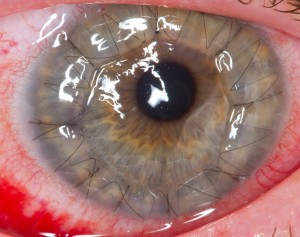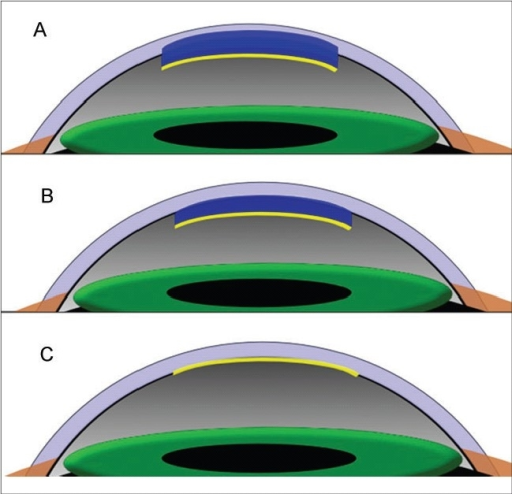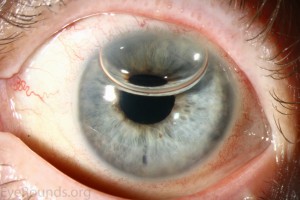On February 1, 2018 I am scheduled to have eye surgery, a procedure known as Descemet’s membrane endothelial keratoplasty (DMEK). Here for the curious is a detailed explanation.
The problem is that the endothelial layer of my cornea is dying. See the detailed diagram below, courtesy of NIH. This thin layer of cells keeps a proper balance of fluids in the cornea; without it the cornea swells, goes cloudy, and eventually forms blisters. The cause is not known but is thought to be partly genetic.
Until about 2000 the only available treatment was full-thickness penetrating keratoplasty (PK). This involved removing a large portion of the cornea and replacing it with a donor, sewed in with a dozen stitches and taking a year to heal. Fortunately, this is NOT the procedure I will be having. See the photo below with the visible stitches around the eye.
Over the next 15 years doctors learned how to transplant just the inner layers of the cornea through a small incision, resulting in much quicker healing and much better vision. They have gradually decreased the thickness of the transplant until now DMEK, the procedure I will have, transplants only the inner two layers, about 10 microns thick (illustration C in the drawing below).
The procedure is out-patient and takes less than an hour. To keep the graft sticking to the cornea they inject a gas bubble to hold it in place.
Donaghy CL, Vislisel JM, Greiner MA. An Introduction to Corneal Transplantation. May 21, 2015; Available from: http://EyeRounds.org/tutorials/cornea-transplant-intro/
To keep the bubble from floating to the top of the eye (as in the photo above), I need to lie flat on my back for a day, maybe two or three. As the bubble goes away, if the graft takes hold and starts working, my vision will quickly return to normal. I hope to return to school one week later. Within just a few weeks many patients are back to 20/20 vision.
This is a transplant of tissue from an donor eye (a big thank you to some anonymous organ donor), so there is a risk of rejection. For this reason I will take daily steroid eye drops indefinitely. That is a small price for good vision.




